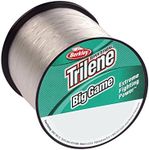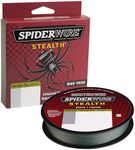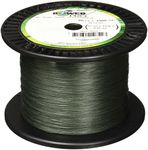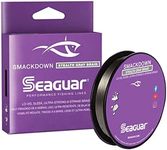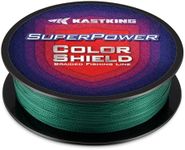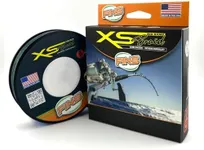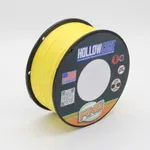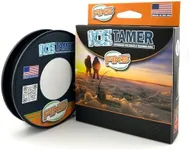Buying Guide for the Best Baitcaster Fishing Line
Choosing the right fishing line for your baitcaster reel is crucial for a successful fishing experience. The right line can improve your casting distance, accuracy, and overall performance. When selecting a fishing line, consider the type of fish you are targeting, the fishing environment, and your personal preferences. Understanding the key specifications of fishing lines will help you make an informed decision and enhance your fishing adventures.Line TypeThe type of fishing line you choose can significantly impact your fishing experience. There are three main types: monofilament, fluorocarbon, and braided. Monofilament is versatile and easy to handle, making it great for beginners. Fluorocarbon is nearly invisible underwater and has low stretch, which is ideal for clear water and sensitive bites. Braided line is extremely strong and has no stretch, making it perfect for heavy cover and long casts. Choose the line type based on your fishing conditions and the species you are targeting.
Line Strength (Pound Test)Line strength, measured in pounds, indicates how much weight the line can handle before breaking. This is important because it needs to match the size and strength of the fish you are targeting. Light lines (2-8 lbs) are suitable for small fish like panfish and trout. Medium lines (10-20 lbs) are good for bass and walleye. Heavy lines (20+ lbs) are necessary for large species like pike and muskie. Consider the average size of the fish in your fishing area to choose the appropriate line strength.
Line DiameterThe diameter of the fishing line affects its visibility, strength, and casting performance. Thinner lines are less visible to fish and can cast further, but they may not be as strong. Thicker lines are more durable and can handle heavier fish, but they are more visible and may reduce casting distance. If you are fishing in clear water, a thinner line may be beneficial. For heavy cover or larger fish, a thicker line is more appropriate. Balance the need for strength and invisibility based on your fishing environment.
Abrasion ResistanceAbrasion resistance refers to the line's ability to withstand wear and tear from rocks, vegetation, and other underwater obstacles. This is important if you are fishing in areas with a lot of cover or structure. Lines with high abrasion resistance are less likely to break when rubbed against rough surfaces. If you frequently fish in rocky or weedy areas, look for a line with good abrasion resistance to ensure durability and reduce the risk of losing fish.
Line StretchLine stretch affects sensitivity and hook-setting power. Lines with low stretch, like fluorocarbon and braided lines, provide better sensitivity and quicker hook sets, which is important for detecting subtle bites. Monofilament lines have more stretch, which can be beneficial for absorbing shocks and preventing line breakage during sudden fish movements. Consider your fishing style and the type of fish you are targeting when choosing the line stretch. For finesse techniques and sensitive bites, low stretch is preferable. For aggressive fish and hard strikes, some stretch can be advantageous.
Line ColorThe color of the fishing line can affect its visibility to both the angler and the fish. Clear or low-visibility lines are less likely to spook fish, making them ideal for clear water conditions. High-visibility lines, such as yellow or green, are easier for anglers to see above water, which can be helpful for detecting bites and managing line. Choose a line color based on the water clarity and your personal preference for visibility. In murky water, high-visibility lines can be beneficial, while in clear water, low-visibility lines are often more effective.


